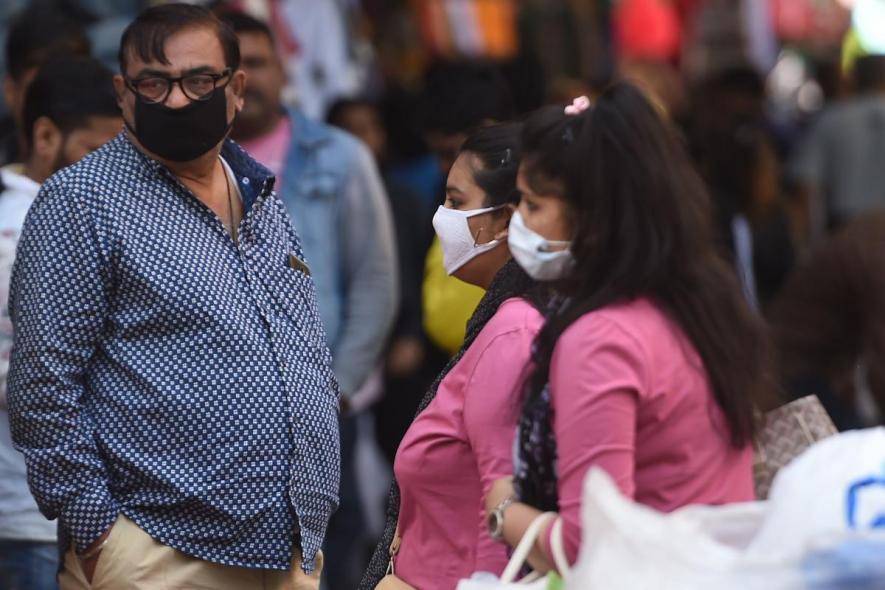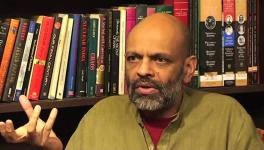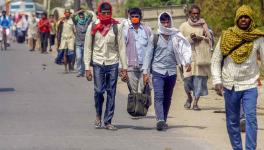Tackling Future Pandemics: Bhoomi Pujan of Another Kind

Image Courtesy: Deccan Herald
An interdisciplinary study, “Ecology and Economics for Pandemic Prevention”, written by 17 researchers from different geographies and published in the journal Science in July, concludes that the world “may lose at least $5 trillion in GDP in 2020, and the willingness to pay for the lives lost constitutes many additional trillions.” The scientists estimate these costs without the costs of the rising tally of morbidity, the deaths from other causes due to disrupted medical systems, and the loss to society of foregone activities due to social distancing.
We all know that the two major human activities with the potential to cause pandemics are deforestation and trade in wildlife. “For a century,” say the lead author of the study Andrew P Dobson and his 16 co-researchers, “two new viruses per year have spilled from their natural hosts into humans.” These include the MERS, SARS and H1N1 epidemics, and the HIV and COVID-19 pandemics. “Zoonotic viruses infect people directly most often when they handle live primates, bats, and other wildlife (or their meat) or indirectly from farm animals such as chickens and pigs.” The authors note that COVID-19 has not taught the world the value of preventing deforestation and regulating wildlife trade, despite “well-researched plans that demonstrate a high return on their investment in limiting zoonoses…”
Bottom of form:
Politicians the world over understand that the deleterious consequences of deforestation include environmental degradation. Still the short-term and immediate gains of “development” based on rampant exploitation trump the long-term concerns. And there are pockets of deep ignorance as well. Few understand, for instance, that the “tropical forest edges are a major launch-pad for novel human viruses”, as the authors of the study warn. It is building roads, clearing forest for timber and agriculture create these “edges”. Once a virgin forest is denuded by more than 25%, humans and livestock become more likely to come in contact with wildlife and this increases the risk of disease transmission. “Road building, mining and logging camps, expansion of urban centres and settlements, migration and war, and livestock and crop mono-cultures have led to increasing virus spillovers,” the study point out. Bats, an otherwise reclusive mammal, for instance, are probable reservoirs of Ebola, Nipah, SARS, and the virus behind COVID-19.
The conclusion of these and other scientists is unmistakable. Given the direct link between deforestation and emergence of new viruses which threaten humans and other animals, they suggest “a major effort to retain intact forest cover”. But that is not all. Retaining forests would “have a large return on investment even if its only benefit was to reduce virus emergence events.” But this requires “national motivation and political will.”
Apropos the origin of pandemics, the world has to think afresh about wildlife sale as a source of protein. “Global demand for wildlife causes people to enter forests to collect wildlife for sale in markets in urban and rural areas. In cities, where people have diverse options for protein, bushmeat is a luxury… Laws to ban the national and international trade of high-risk disease reservoir species, and the will to sustain their enforcement, are necessary and precautionary steps to prevent zoonotic disease. Regulations must keep primates, bats, pangolins, civets, and rodents out of markets.”
The researchers estimate that preventing a pandemic like Covid-19 for 10 years would cost only 2% of the likely $5 trillion losses it will inflict.
The power of good trouble:
The late American Congressman John Lewis’s ringing words on racial justice in the United States—“good trouble, necessary trouble”—means in the context of pandemics that countries chalk out a policy path that can ensure the safety, nay existence, of humankind. And charity always begins at home.
But we seem intent on the opposite. Our planned post-Covid-19 “green recovery” includes the ominous news that the Centre intends to fell four huge blocks of Chhatisgarh’s Hasdeo Arand’s 4,20,000 acres of biodiversity-rich forest for commercial exploitation to create 40 new coalfields (with ash content of 45%). “Why cannot India be the world’s largest exporter of coal?” asked the PM rhetorically, while announcing the coal auction project. The Adani group is one of the likely beneficiaries of this mining project predicated on India’s “atma nirbhar” and ease of recovery. It will turn into another “Bellary” in India’s heartland where the poor and the indigenous population of adivasis live.
Unlike the putative 18 war-days of the Mahabharata, the 21-day theatrical national lockdown in the closing days of March did not help Indians. Even now, after seven-fold more days have passed, COVID-19 is storming across India. Rhetorical metaphors and shiny optics are out of sync with reality. Things need not have come to such a pass: viruses were, and are, best left to scientists, researchers, public health experts and epidemiologists. Our responses needed to be based on science and scientific data—not mythologising—and we should, must, share their data transparently. Viruses and pandemics resent rhetoric.
Remember that COVID-19 has completely overhauled the past normal. The new normal enjoins a changed paradigm. Caught on the wrong foot once, when we ushered in Anno Domini 2020 prematurely, at least now we need to be smart and open to ideas. Remember when India bestowed the honour on Jair Bolsonaro, the unconscionable dictator of Brazil, to be chief guest on Republic Day? If that wasn’t enough, we conferred the honour on Trump of making him a special invitee. They are now the shiniest examples of the biggest failures in the world, the worst leaders in the firmament—selfish, inept, anti-science, lacking elementary common-sense, bigoted and bereft of empathy. We must shun such leaders, not fête them.
And there are more recent follies (that can help us view the draft EIA through the prism of COVID-19). Over the past few months, the world has changed—and continues to change quickly as science quickly catches up with the new virus. We must learn and re-calibrate. The myth of sustainable development, our token offerings to sustainability, our loud incantations to control climate change, all are passé. People can be forced to accept lies with litanies of avowals, but Nature is not gullible. Unconscionable actions can be rammed down citizens’ throats and “independent bodies” can deem acquiescence the better part of valour, but nature is chemistry, biology, and physics. The shibboleths of cronyism, opacity, favouritism, populism, lack of accountability don’t charm the natural world. This has to be internalised: let nature be our friend, philosopher, and guide. Our hubris and perceived past gains make us balk at change. After the discovery of a vaccine, our memories of today’s sufferings might pale. But the next pandemic could be round the corner, and that is why we have to work harder to accept reality.
During my time in the ministry of environment, forests, and climate change, I witnessed the mendacious hubris of a “Chai pe Charcha”—another theatre conjured up in ecstasy of the 2014 electoral win—that senior officers had to submit to every morning. Project Tiger and a road-widening project on National Highway 7 were the debating point. The issue had gained significant traction because the expansion of this highway would lead to likely destruction of the animal corridor between two of India’s iconic tiger reserves, Kanha and Pench, in Madhya Pradesh and Maharashtra. It would also impact the Navegaon-Nagzira Tiger Reserve that enfolds five protected areas—Nagzira, New Nagzira, Koka, Navegaon National Park and the Navegaon Wildlife Sanctuary. Here was a classic environment-versus-development conundrum: should we spend ten times more than the amount laid out for expanding this highway to protect an “intangible environment” whose “return on investment” was not visible in the immediate future?
The Additional Director-General (Project Tiger), who is also Member-Secretary of National Tiger Conservation Authority (NTCA), would not agree with the proposal to build underpasses, each 50 metres in length. It would choke animal movement, he said, and argued for larger underpasses for easy movement of wild animals. The minister said that when we are unable to feed people, must we bother about wild animals?
That was that.
The post COVID-19 normal shall certainly throw up more challenges like that one, but the old normal will not work. What the experts, specialists and scientists say will have to be heard—we really do have only “one world climate and one world health”. This simple but profound lesson requires understanding and knowledge, rumination and cogitation. It admits no short cut, and no short attention span—the sad inheritances of decision-making in this country.
The ministry of environment is on trial for its draft EIA 2020. It would help test the new waters and policy sausage: whether in the post-COVID-19 world we will accept change and adaptation as the new mottos or will the ministry persevere on with its past portfolio of intransigence. Will our future models be based on secrecy and flagrant dilution of universal EIA norms as they are now? What we must not miss is that the EIA is in fact sorely in need of further tightening to protect and conserve the environment. For instance, would the forest panel’s in-principle approval in 2019 to the department of atomic energy’s (DAE) proposal for survey and exploration of Uranium over 83 sq km in the Amrabad Tiger Reserve in Telangana be finally reneged upon?
How much COVID-19 has changed the world is best captured in a metaphor by Dr Ali S Khan, a former director of the Office of Public Health Preparedness and Response at the Centers for Disease Control and Prevention (CDC), who is presently dean of the College of Public Health at the University of Nebraska Medical Center in Omaha. He has intimate experience with almost all potential pandemic threats of the last few decades and he has said in his book, The Next Pandemic, that “the time has come for us to move beyond seeing public health as the axe in the display case, where the sign says in case of emergency, break glass.”
But India’s draft EIA is far from “vexed”. It offers no option even to break the glass in an emergency. Nature has trumped Trump in the United States and his lackey Bolsonaro in Brazil, upsetting the re-election calculus that assiduously sought global publicity in a gut-wrenching inflection of “Vivekamundan” in Motera Stadium. In India, though, anything is mumkin—possible. The whiplash of mumkin bookends all conversations: Nature shall be bloodied, even worsted and quietly made to acquiesce with EIA diktats. At least, that is the spirit of this draft.
As a panacea—an uncomplicated one at that—we were offered a bhumi pujan recently. But what we need is even simpler, a shilanyas of prakriti, which is unbigoted, non-polarising, open to all religions and where the better angels of our nature can still rule like potentates. Learning to revere this goddess, appropriating her wishes and acting humanely and unselfishly can nurture life on this planet. Nothing else will work.
(This concludes a two-part series on the connection between pandemics and climate change.)
The author is a former civil servant. The views are personal.
Get the latest reports & analysis with people's perspective on Protests, movements & deep analytical videos, discussions of the current affairs in your Telegram app. Subscribe to NewsClick's Telegram channel & get Real-Time updates on stories, as they get published on our website.
























